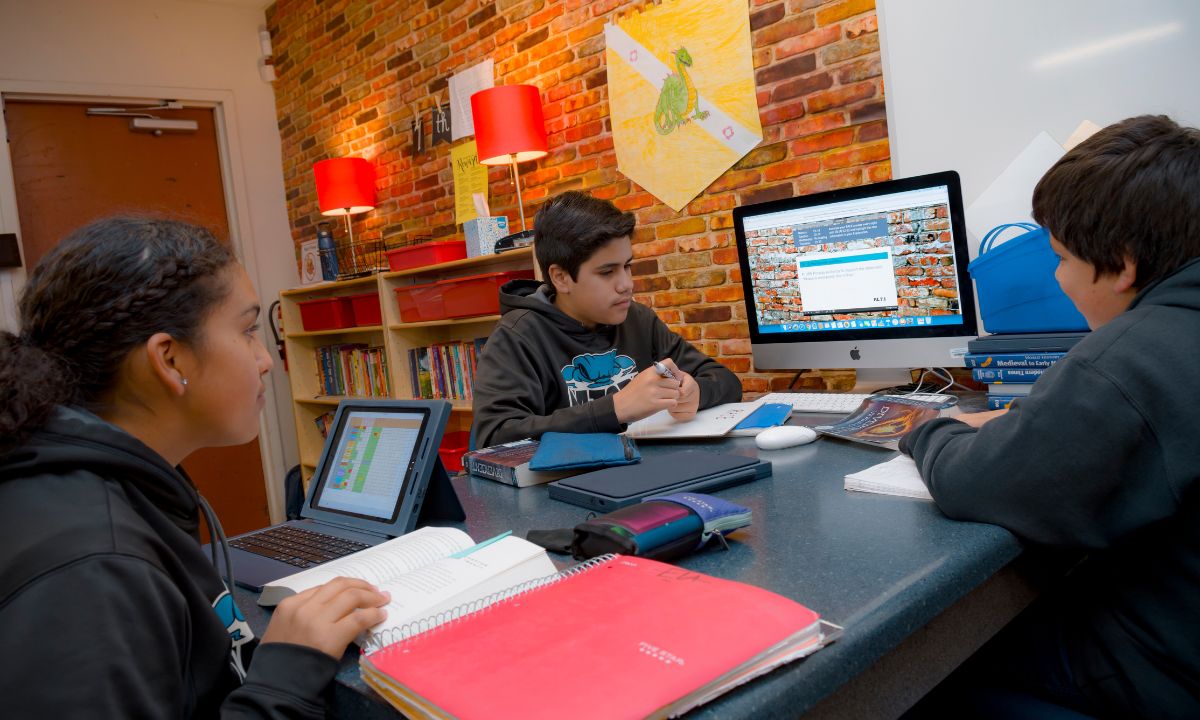What California Teachers Are Trying, Building, and Learning with AI
Waite, Chu and Weiner: AI tools can be powerful when supporting a clear, consistent instructional strategy and strong teacher-student relationships.

Get stories like this delivered straight to your inbox. Sign up for The 74 Newsletter
One California teacher used an artificial intelligence tutor to support students below grade level. Another used AI to create lesson plans. A third tried the technology for sorting students into small groups.
AI has the potential to address many fundamental barriers in education — if it’s implemented effectively. Headlines tout its rapid adoption and a growing market of AI-enabled education tools, but few are paying attention to how educators choose and use those tools or the challenges they face when implementing them.
In the 2024–25 school year, researchers from the Center on Reinventing Public Education (CRPE) studied 18 California schools that are piloting AI tools to address issues like learning gaps, behavioral challenges, and teacher inexperience. Facilitated and funded by the Silicon Schools Fund, we found that AI tools can be powerful when used to support a clear, consistent instructional strategy and strong teacher-student relationships. But we also learned that results are by no means guaranteed, and many educators were unable to find tools that met their needs.
Perhaps counterintuitively, educators wanted to preserve or even deepen human relationships between teachers and students in schools. When Katie Sanchez, a third-grade teacher in Sacramento joined the Silicon Schools Fund cohort, her first instinct was to give students a chatbot for feedback on their writing. But she soon realized, “I like to look through my students’ writing. I like to sit down and confer with them.” Rather than reduce that “human connection,” she used AI to automate parts of lesson planning, freeing her to focus on the relationships she values most.
Despite these successes, many educators were dissatisfied with current AI education tools, even after extensive experimentation. One pilot team from Clovis Global Academy in California’s Central Valley hoped to save time by having AI automate the creation of student groups for small-group learning. The team ultimately called their custom-built tool a failure after putting in considerable time to design it, with output from the tool that they graded a “C-”. One administrator explained, “It’s just not clear right now that it’s worth our staff’s time to develop the capacity to learn how to work with the AI.”
Our study led us to three important conclusions::
School system leaders and education technology developers should ensure that educators develop a strong foundational understanding of AI: how it works, how to use it effectively, and how to mitigate its risks.
Schools and districts should establish a clear vision for how AI will integrate with instruction and key school priorities.
AI developers should better align products to what educators and students say they need, and involve educators throughout the design, development, and adoption process.
Get stories like these delivered straight to your inbox. Sign up for The 74 Newsletter

;)


